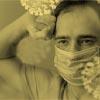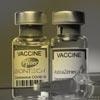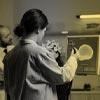Health Ministry Unveils Guidelines for Identifying Heatstroke and Heat-Related Deaths

News Synopsis
The Indian Ministry of Health has taken a crucial step to address the growing threat of heatstroke and heat-related deaths. New standardized guidelines, developed by the National Programme on Climate Change and Human Health (NPCCHH) and National Centre for Disease Control (NCDC), aim to improve heatstroke diagnosis and reporting practices in hospitals across the country.
Addressing Knowledge Gaps and Strengthening Decision-Making
These guidelines equip healthcare professionals with clear criteria for identifying heatstroke and related deaths. This standardization aims to establish a more consistent and evidence-based approach to heat-related illness, particularly in light of the rising number of heatwaves in India.
Here's a breakdown of the key aspects of the guidelines:
-
Improved Hospital Awareness: The guidelines aim to educate hospitals on the criteria for classifying deaths as heatstroke or heat-related, promoting more accurate diagnoses and reporting.
-
Autopsy Considerations: While autopsies are not mandatory for all suspected heatstroke cases, the guidelines outline situations where an autopsy might be beneficial. Factors like the availability of resources, age of the deceased, and the body's condition are considered when making this decision. Additionally, the guidelines emphasize the importance of collecting blood and urine samples for toxicological analysis when possible.
The Growing Threat of Heatwaves and Climate Change
The guidelines acknowledge the significant impact of climate change on heat-related illnesses. Here are some key statistics highlighted in the document:
-
Increased Heat-Related Mortality: Globally, the average annual death toll from heat-related illnesses has risen by an estimated 85% between 2013-2022 compared to 1991-2000.
-
Projected Rise in Heat Deaths: If global temperatures continue to climb towards 2°C above pre-industrial levels, projections suggest a staggering 370% increase in annual heat-related deaths by mid-century, assuming no significant advancements in adaptation strategies.
These figures underscore the urgency of improving heatstroke diagnosis and implementing effective heat action plans.
Challenges and Collaboration
The guidelines acknowledge the challenges associated with diagnosing heatstroke-related deaths, particularly in post-mortem examinations:
-
Limited Temperature Data: Pre-terminal or terminal body temperature readings are often unavailable.
-
Non-Specific Autopsy Findings: Autopsy results can be inconclusive and depend on the time elapsed since heat exposure.
-
Scene Investigation Importance: Diagnosis often relies heavily on the circumstances surrounding the death and eliminating other possible causes.
To address these challenges, the guidelines recommend collaboration between hospitals and forensic medicine departments. This collaboration would ensure proper autopsy procedures and sample collection for further pathological analysis when necessary.
The implementation of these new guidelines has the potential to significantly improve heatstroke diagnosis and reporting in India. This, in turn, can lead to better public health interventions and a more accurate picture of the nation's heat-related illness burden.
Autopsy Recommendations:
While autopsy findings may be non-specific, the guidelines stress that autopsies are not mandatory in all cases of heat-related illnesses. However, hospitals equipped with forensic medicine departments are encouraged to collaborate in performing autopsies and conducting histopathological evaluations on relevant samples. This collaborative approach ensures a thorough assessment of heat-related fatalities and facilitates accurate diagnosis and management.
Additionally, the guidelines emphasize the importance of hospitals maintaining close coordination with pathology departments for histopathological evaluations of collected samples. By leveraging the expertise of pathologists, healthcare institutions can obtain valuable insights into the underlying physiological changes associated with heat-related deaths, thereby enhancing diagnostic accuracy and treatment strategies.
Furthermore, the guidelines underscore the significance of continuous monitoring and surveillance of heat-related illnesses to identify emerging trends and patterns. Through robust data collection and analysis, healthcare authorities can implement targeted interventions and preventive measures to mitigate the impact of extreme heat events on public health.
In conclusion, the recommendations outlined in the guidelines serve as a comprehensive framework for healthcare professionals to effectively respond to heat-related fatalities. By fostering collaboration, enhancing diagnostic capabilities, and promoting evidence-based practices, these guidelines contribute to the overall efforts in safeguarding communities against the adverse health effects of rising temperatures.
You May Like









